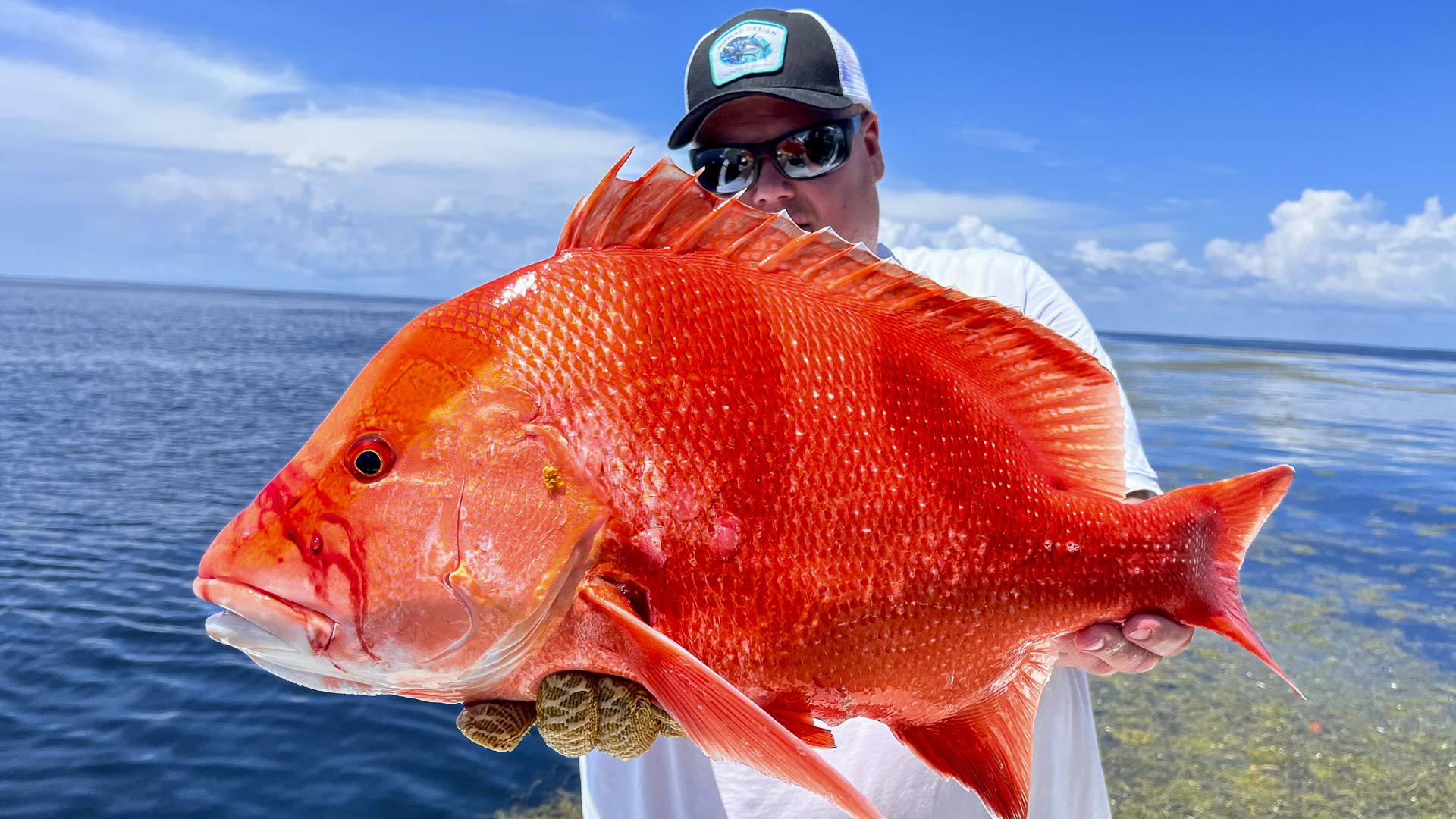Fishing Seasons
The GT fishing season in Kenya can be divided into two periods: from January to the end of March and from October to the end of December. While GT fishing remains consistent throughout the year, there are differences between these two seasons in terms of other fish species you can expect.
From January to the end of March, large schools of yellowfin tuna are often found. Depending on currents, water temperature, and wind conditions, yellowfins appear in significant numbers. We typically fish for them using poppers, with tuna sizes ranging from 10kg to over 100kg! As tunas are migratory during this period, it’s not guaranteed how many or how large they will be during your fishing trip, but chances are good for encountering several opportunities.
On the other hand, from October to December, there are usually plenty of sailfish around. The sailfish season typically peaks in November, with catches of five or more sailfish in one day being common. We fish for sailfish while moving between popping and jigging spots, or when we shift the main fishing area to the north. The common technique used to catch sailfish involves bait and switch with light spinning rods.
Check out our recent catches of the last two GT seasons -> Catches & Videos
Fishing Techniques for the GT season in Kenya!
Depending on the GT season in Kenya, we employ various fishing techniques, including popping, jigging, and trolling. This variety ensures an exciting mix of fishing experiences during your adventure in Kenya.
Popping
Popping is the most common fishing technique during the GT season in Kenya. There’s nothing more thrilling than witnessing a huge GT smashing the popper! And believe us, you’ll witness that spectacle many times while fishing for Giant Trevally in Kenya!
The areas we choose for popping depend on the current, tides, and wind conditions. We have plenty of options, and Angus and Arran know exactly which spots are most likely to be the best for the day. Unlike in other GT fishing destinations like Oman, we always drift while fishing.
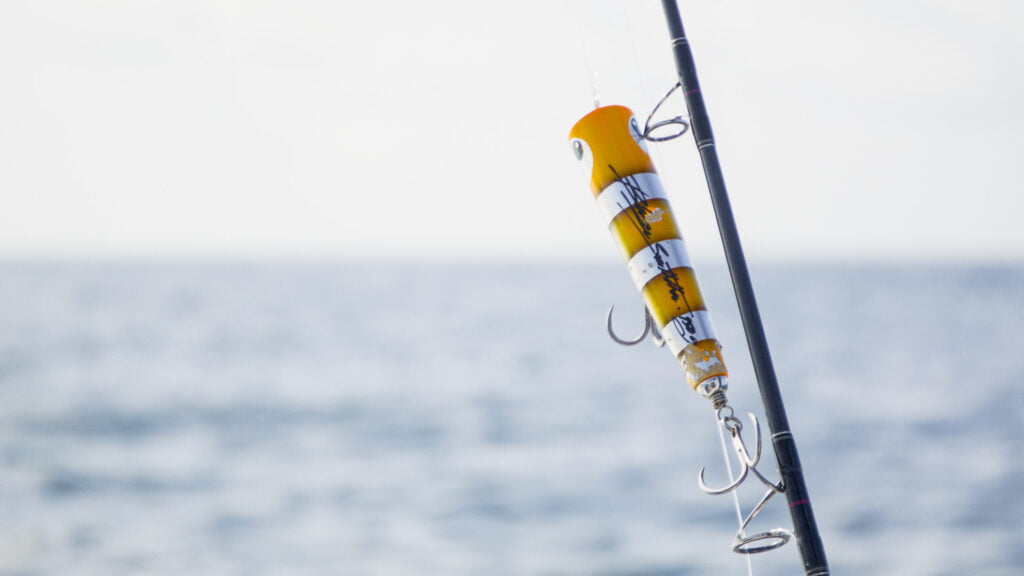
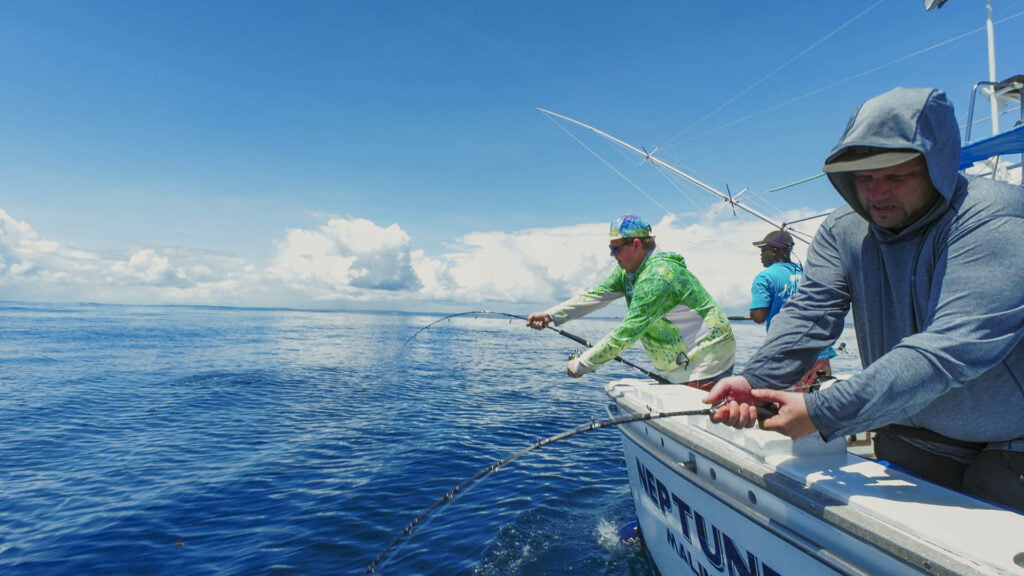
Jigging
Jigging also works exceptionally well during the GT season in Kenya. Our biggest GT so far was caught jigging and weighed 73kg! The depth for jigging GT and other reef fish depends on water temperature and currents, particularly from January to March. Typically, we jig in deeper waters at the continental drop-off, reaching depths of up to 100 meters. The average jigging depth during this period ranges from 50 to 80 meters.
Jigging during October to December differs slightly from the January-March fishing season. Depending on the tide, currents, and winds, you’ll typically jig between 30 and 80 meters. Often, we encounter large schools of sardines in shallow waters between 20-30 meters, allowing for the use of small, light jigs weighing between 100-150g. If the currents or temperature aren’t favorable, we target deeper water spots.
Trolling / Bait & Switch
In Kenya, we troll while heading out or move between popping and jigging spots. It’s important to note that we prioritize efficiency over unnecessary fuel consumption. Rest assured, the time allocated for popping and jigging each day is more than sufficient to hook a big GT. Many anglers welcome a brief respite between these activities, as they can be quite strenuous. Typically, trolling accounts for a total of around 3-4 hours per day, leaving ample time for 6-7 hours of intense popping and jigging.
During the January-March season, you can expect encounters with marlin, sailfish, and other blue water species while trolling. When fishing in shallow areas, we always keep bait & switch rods ready for sailfish or dorado. If you’re interested in targeting big blue, striped, or black marlin, you’re welcome to spend some time fishing in deeper waters before transitioning to jigging or popping.
In October-December, we usually have abundant sailfish activity, peaking in November with the annual sailfish run. During this period, we employ bait & switch rods for trolling sailfish. There’s nothing more thrilling than witnessing a pack of sails attacking the teasers behind the boat and hearing the scream of a reel on a light spinning rod!
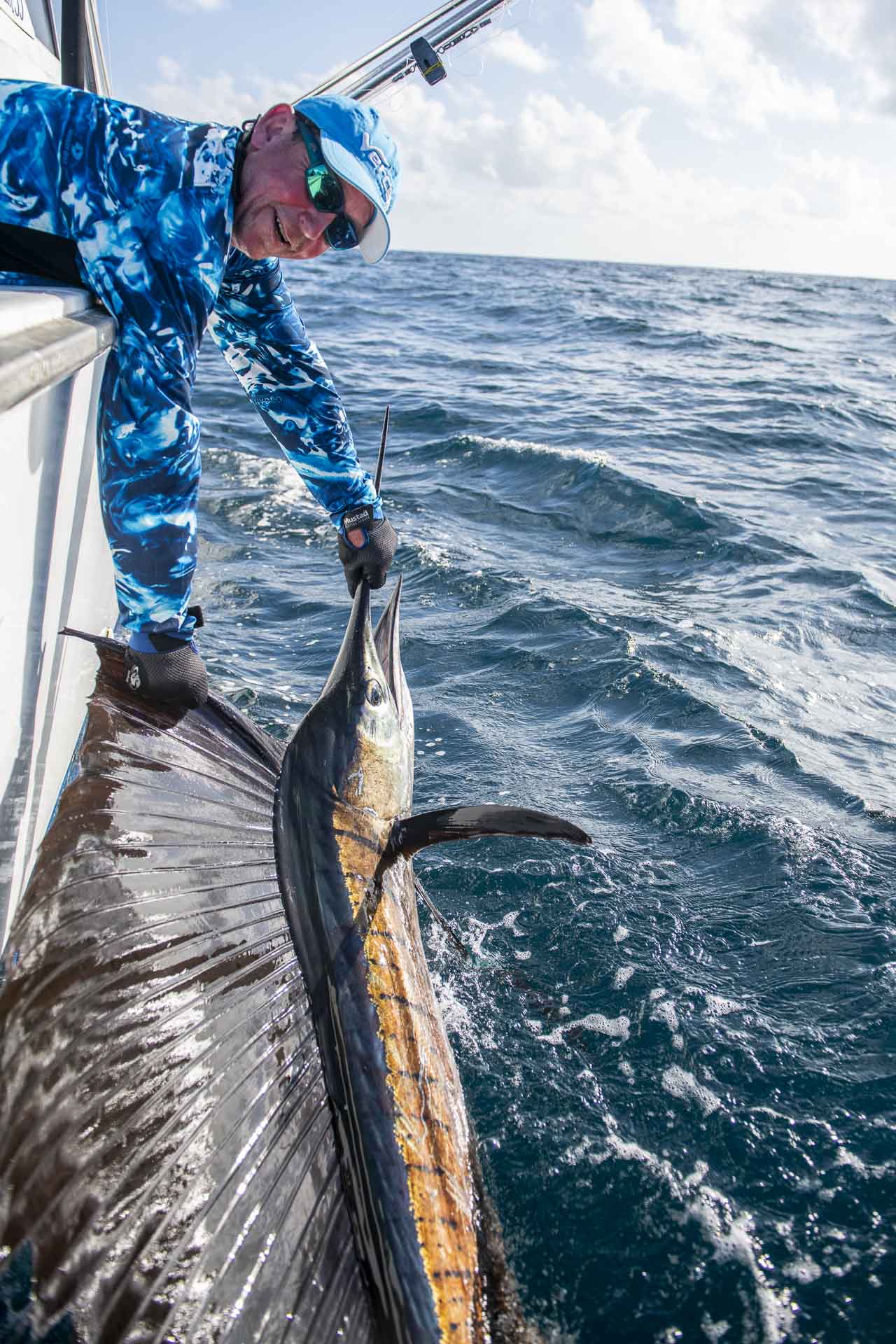
GT Fishing Tackle
Rods, Reels, Line and Leader for GT fishing in Kenya
If you’re planning to fish for GT in Kenya, it’s essential to bring high-quality rods and reels. For popping, you’ll need a PE10 popping rod paired with a reliable reel such as the Daiwa Saltiga 14000-18000 or a Shimano Stella 14000-18000 with a high gear ratio. A 100lbs braided line is highly recommended, along with a sturdy 220-240lbs shock leader.
For jigging, you’ll require a short jigging rod rated PE6-8, paired with a slow gear reel like the Daiwa Saltiga 18000-20000 or the Shimano Stella 20000. It’s crucial to use a reel with a slow gear ratio for jigging in Kenya, ideally between 4.2:1 and a maximum of 5.6:1. An 80lbs braided line is recommended, and the leader for jigging should not be too thick. Typically, we use a 0.95mm 175lbs test mono leader, although you could opt for 150lbs, keeping in mind the risk of losing a big fish.
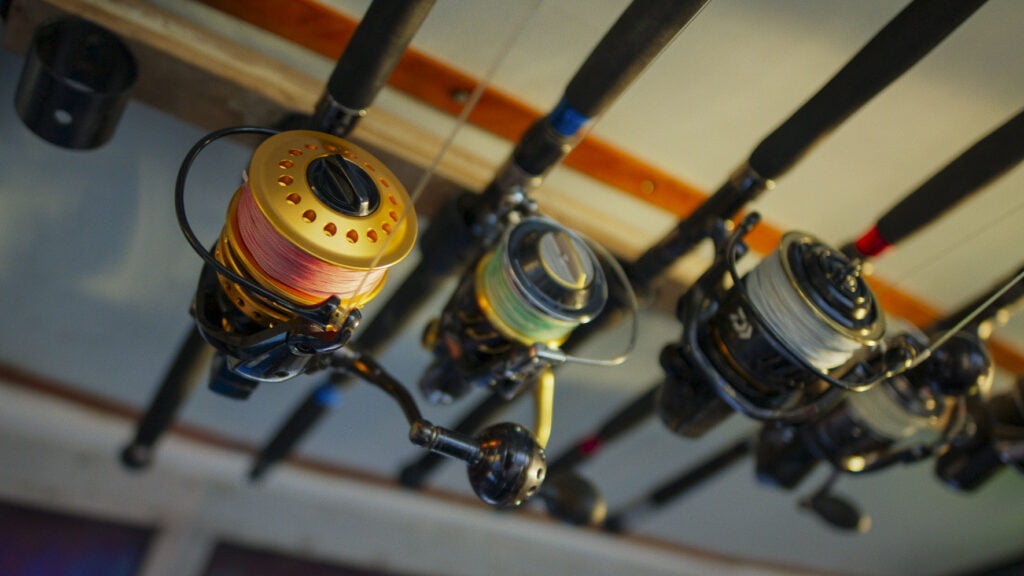

GT Fishing Poppers
Go big or go home! We recommend bringing poppers weighing between 120-180g with large cups. Since you’ll often be fishing in deeper waters, it’s crucial to use a popper that’s loud enough to attract the attention of GTs. Poppers that have performed exceptionally well in the past include the Blaze Garage Saththa, ReefsEDGE, Heru Cubera, and the Halco Roostapopper. However, in our experience, any popper with a longer shape and large cup will attract strikes. While color is less critical, coral trout, fusilier, black/silver, pink/silver, purple, and ivory have all proven effective in the past.
GT Fishing Stick Baits
Stick baits can also be effective, although poppers are currently more successful. Stick baits with a wide ‘walk the dog’ or sliding action tend to work best. Swimming and sinking stick baits are suitable for various situations. Don’t hesitate to use larger stick baits, especially for targeting larger fish. We recommend bringing stick baits up to 25cm in length for big catches! Recommended colors include dark green, fusilier, black, and dark purple.
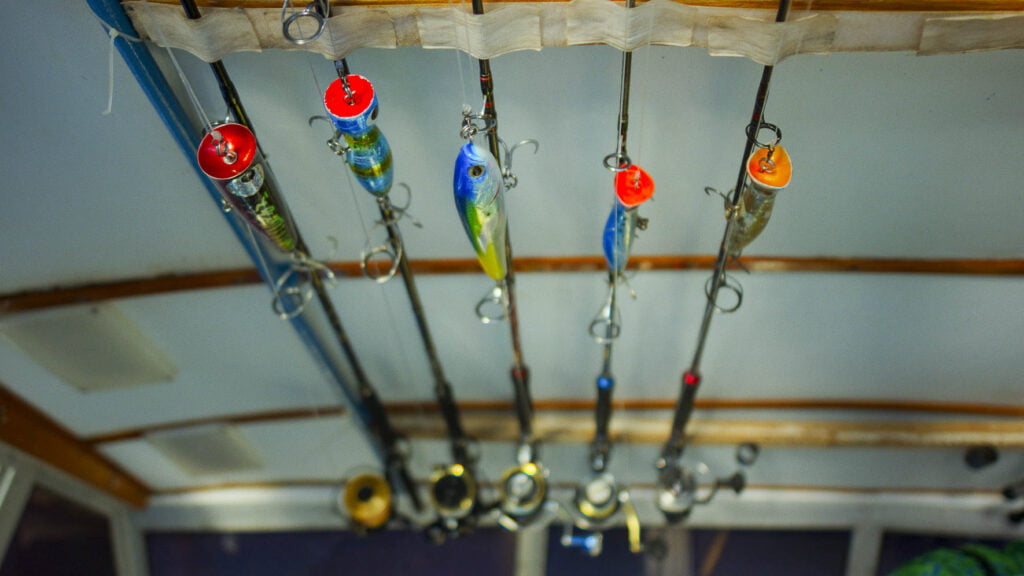
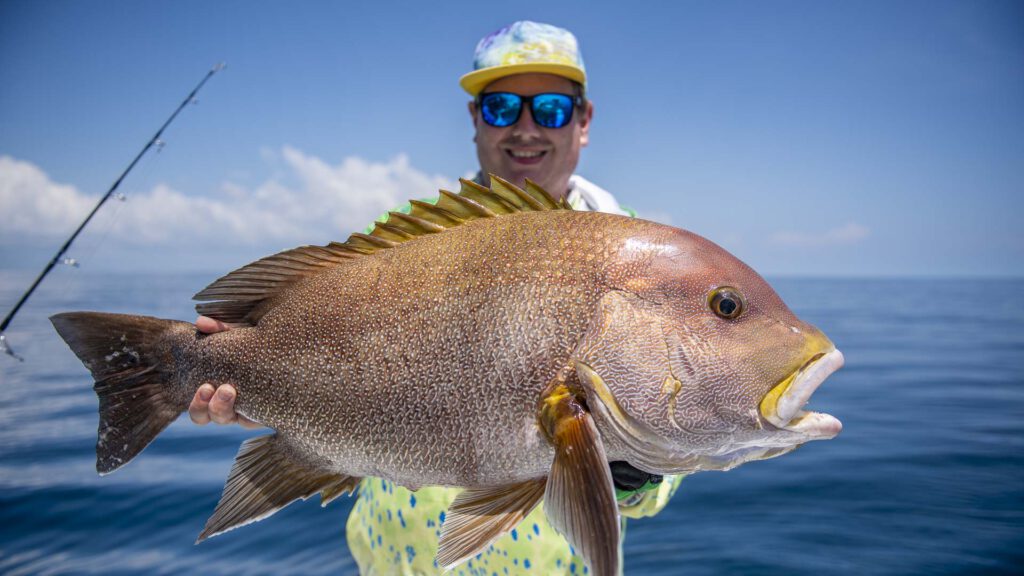
Hooks
If you want a realistic chance to land a monster GT, then you need to bring very strong hooks. We recommend bringing BKK GT-REX barbless hooks to Kenya. Depending on the size of your lures, the hooks range from 5/0 to 7/0. For all large poppers, we recommend using 6/0 or preferably 7/0 BKK GT REX hooks.
For jigging, you’ll need solid jigging hooks in various sizes between 6/0 and 12/0. Since sizes can vary between different manufacturers, it’s advisable to check the size charts provided by the manufacturer to determine the actual size of the jigging hook. We typically use the VMC 7264 BN hooks in sizes ranging from 9/0 to 13/0.
Jigs
Depending on the depth you are fishing in, jigs between 100g and 350g are needed. During January to March, we primarily fish in deeper waters, so you will need jigs between 150g and 350g. In October to December, we sometimes jig in shallow waters where fish are feeding on small sardines, making jigs weighing 100-150g effective. The recommended average weight of the jigs should be 200-250g. Butterfly jigs perform well in both seasons. For January to March, it’s advisable to bring some long-shaped jigs for use in strong currents and deeper jigging spots. Recommended colors include pink/silver/white, blue/silver, and green/silver.
